When winter falls in Toronto, it’s time to kick up the heat and make sure your family is comfortable. While your furnace may throw off a lot of heat and warm up your home, we often neglect to think about all the negative effects that dry heat has on our bodies.
We want to help you understand the importance of having a furnace humidifier and how installing one can ensure everyone stays nice and cozy this winter! Here, we’ll cover:
- Benefits of a humidifier in the winter
- Difference between furnace humidifiers and standalone humidifiers
- Types of furnace humidifiers: Bypass, Drum, Flow-Through and Whole-Home humidifiers
- What’s required to maintain a furnace humidifier
- How to install a furnace humidifier
Why Do You Need a Humidifier?
The winter air is dry, and it does quite a number on your respiratory system and skin. During the winter, we notice things like cracked skin, stuffy noses, sinus problems, and colds. These issues are due to the dry air outside but also from the dry air inside your home.
Having a furnace humidifier helps add moisture to the air, which makes your home more comfortable. The moist air can even help your house feel warmer while still burning the same amount of fuel.
Fluctuating levels of humidity in the home are not only harmful to your body, but it also wreaks havoc on your wood finishings. Too much humidity can lead to dry rot and mold.
There are many different types of humidifiers, so it’s essential to understand each one and how they differ.
The Difference Between Furnace Humidifiers and Stand-Alone Humidifiers
First things first: we want to make sure you don’t confuse furnace humidifiers with the traditional stand-alone ones.
Furnace humidifiers are installed into your HVAC system, so the air coming from your heating unit is humidified throughout the entire house.
A traditional, stand-alone humidifier plugs into a wall outlet and sits on the floor. These are the kind of humidifier you’ll find at stores like Costco or Canadian Tire.
Stand-alone humidifiers only expels the moist air directly from the vents on the unit. This means that the air around the humidifier has the most moisture, and the further you get from the unit, the dryer the air.
To humidify your home with stand-alone humidifiers, you would have to purchase a unit for nearly every room of your house. Not to mention they’re an eye-sore that take up floor space and adds to your electric bill as well!
Plus, stand-alone humidifiers require daily maintenance of filling and cleaning the water tanks. An HVAC humidifier would only require a check at the beginning and end of winter.
Furnace humidifiers require a bit more of an investment upfront, but the long-term benefits far outweigh the initial cost!
Types of Furnace Humidifiers
There are three primary types of furnace humidifiers: bypass/drum-style humidifiers, flow-through units, and whole-home humidifiers.
Bypass/Drum Humidifiers
These install directly to your HVAC system, and they act as a moisture supply to your furnace blower.
When the hot air blows through the bypass, it runs through a rotating wet pad. These must get connected to your home's water supply, and they usually have a humidistat.
You set the humidistat to the desired humidity, and when the sensor drops below that level, the unit kicks in!
Flow-Through Unit
This unit does require a water supply, so there is less maintenance but a higher cost.
For these, the unit will detect the level of humidity in your home and kick on when necessary. When the humidifier comes on, it will draw water from your main supply to soak a water panel. The hot air will pass through the water panel and supply moisture to the home through your ducts. These humidifiers have no stagnant water for the pad to run through.
Whole-Home Steam Humidifier
These humidifiers work separately or with your furnace. They hook up to your home's water supply, and the water is heated. When the humidistat determines that the humidity is below your desired level, it kicks on.
The humidifier will heat the water and convert it to steam and then pass it through your home using the ducts. This choice is most useful for larger homes and people looking for the best long-term solution to dry air.
Installing a Furnace Humidifier
Installing a furnace humidifier does require a certain level of knowledge and skill. Installation instructions come with the units. Drum style and flow-through units install on your home’s bypass duct so they can use the supply plenum to draw air.
For many furnace humidifiers, we recommend hiring a professional to take care of the job. Humidifiers run on 24 or 120 or 240-volts, which can require an extra circuit in your electrical panel. As we said, the upfront cost is minimal when you look at the long-term benefits and lack of necessary maintenance on these units.
Additionally, in many cases, you must hire a professional in order to maintain the humidifier’s warranty. Installing the unit yourself can leave you without coverage in the event of a problem!
Furnace Humidifier Maintenance
Although they don’t require as much day-to-day maintenance, furnace humidifiers do benefit from service from time to time. Basic furnace humidifier maintenance includes:
- Checking pads or panels for sediment build-up at least once per year.
- Cleaning the entire unit once per year.
- For whole-house humidifiers, having a professional check the heating element every few years.
Overall, maintenance of a furnace humidifier is limited as long as you keep up with the unit and the beginning and end of the winter season.







